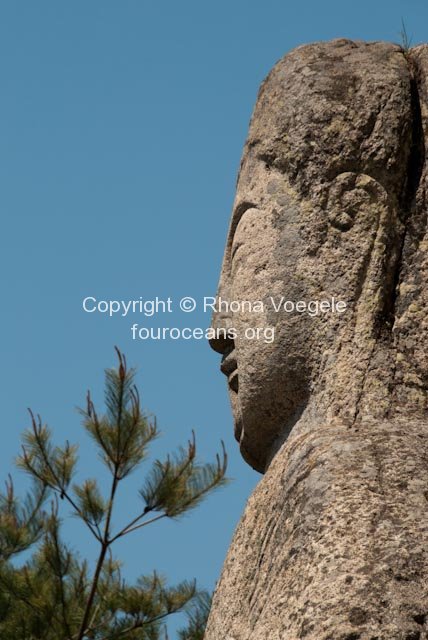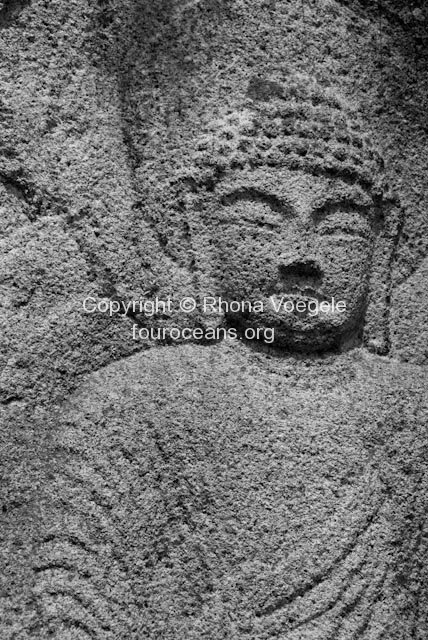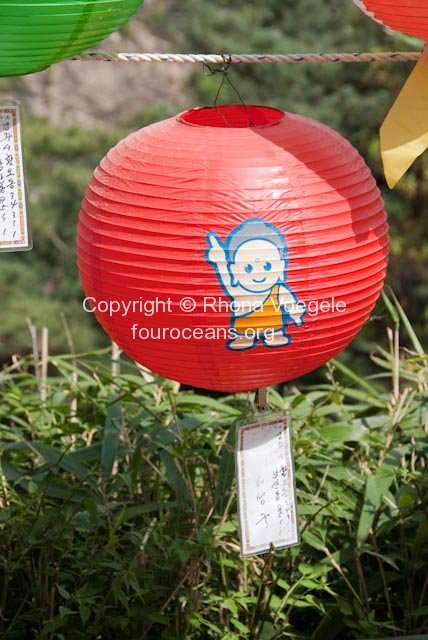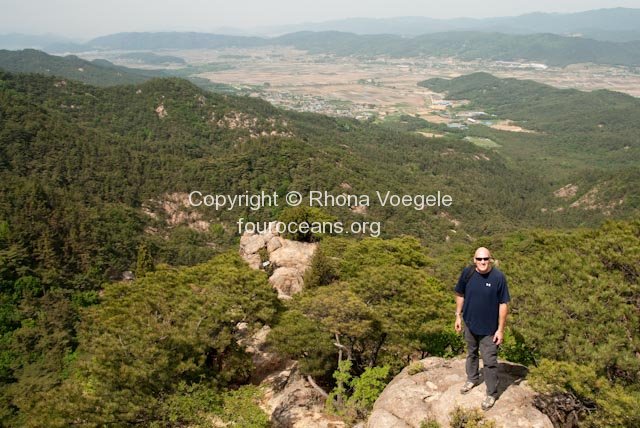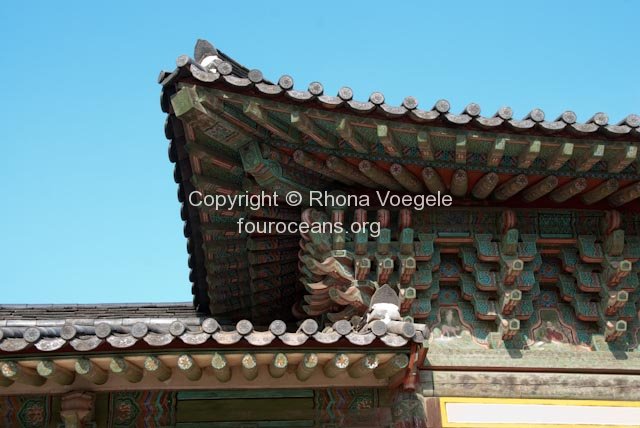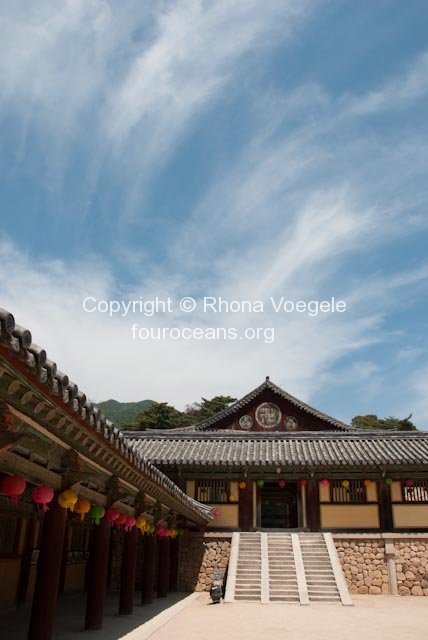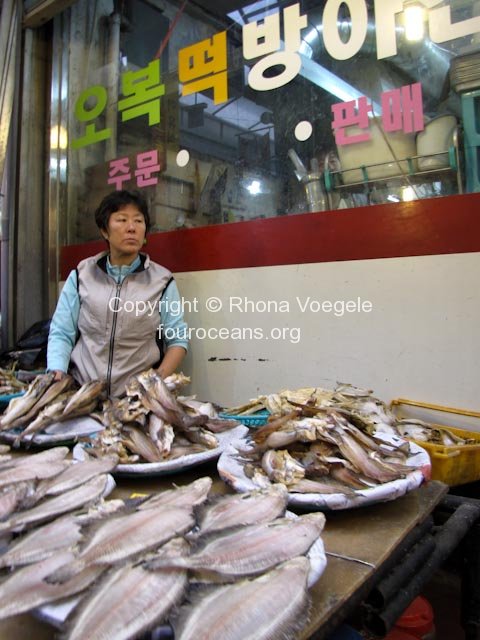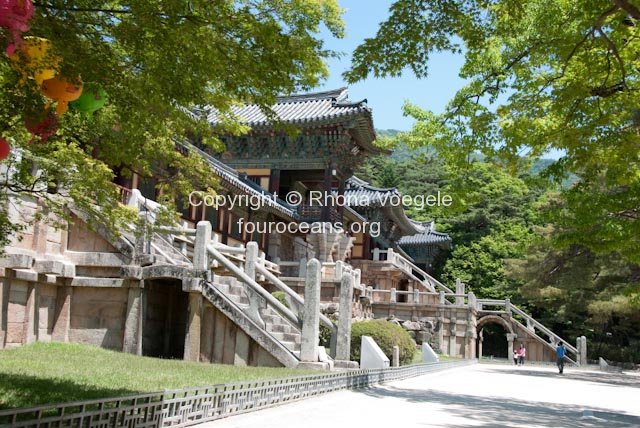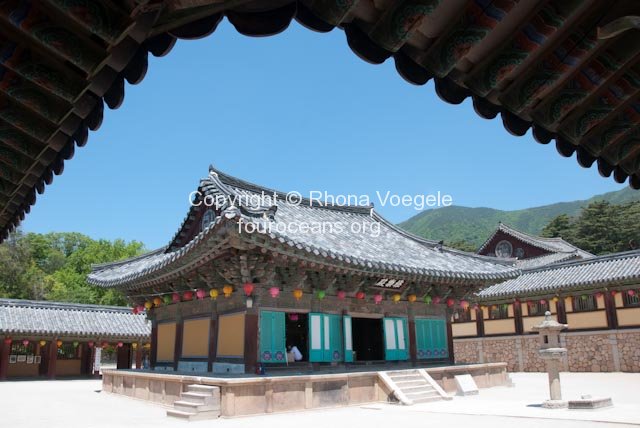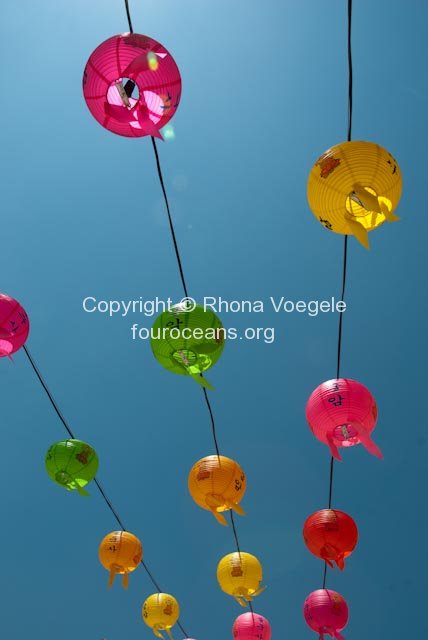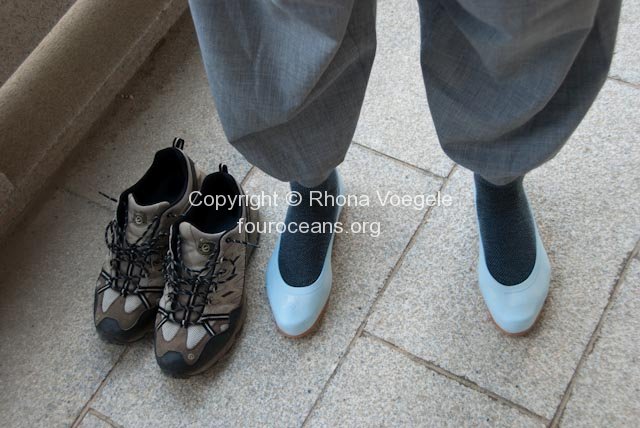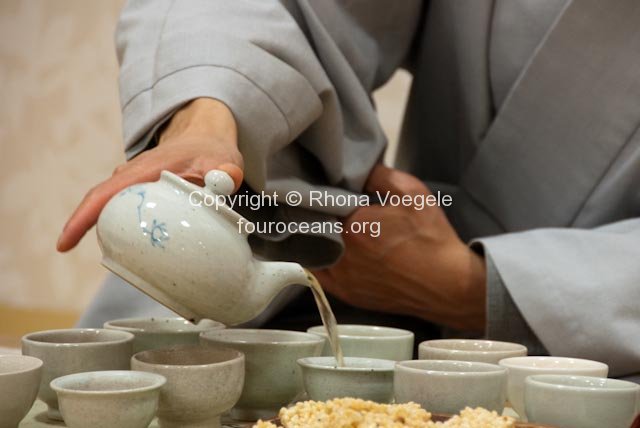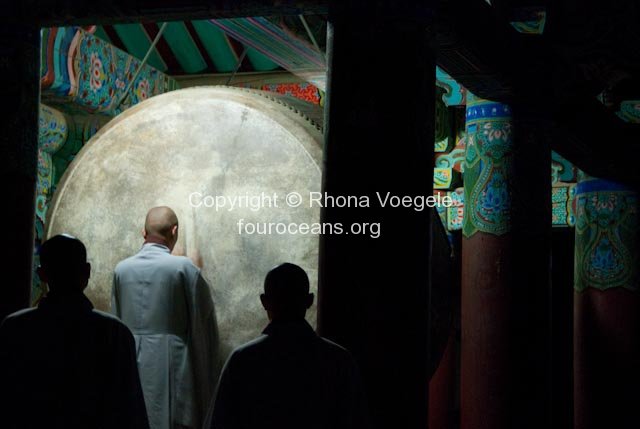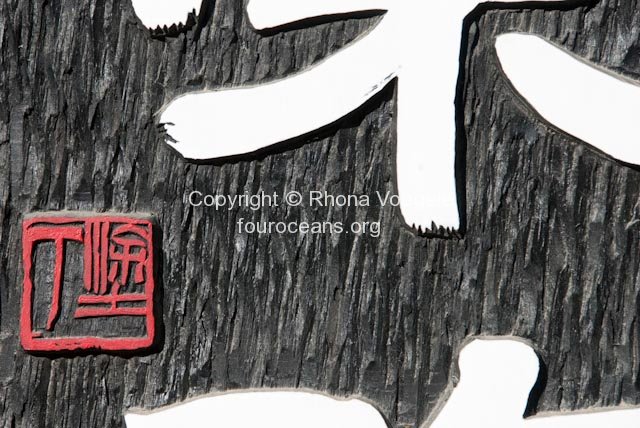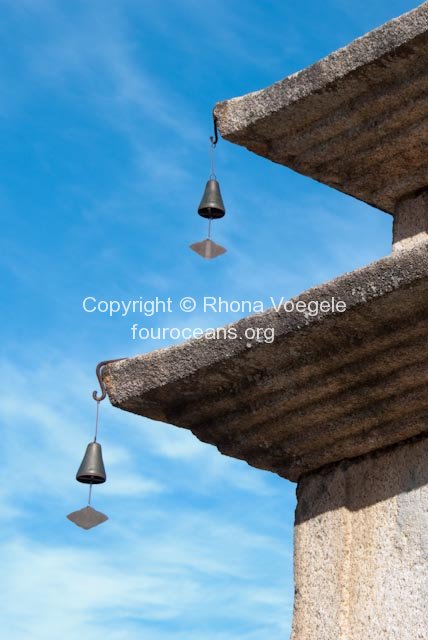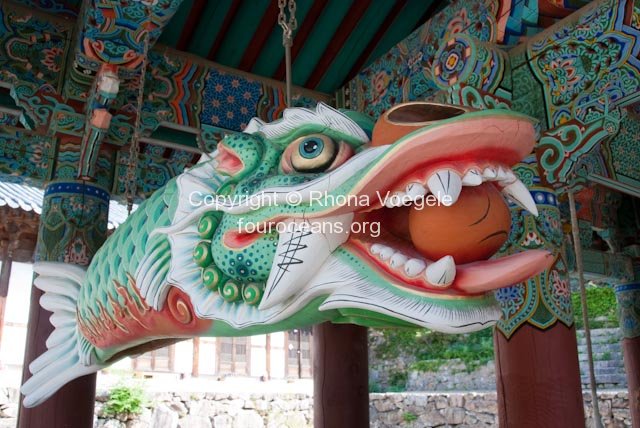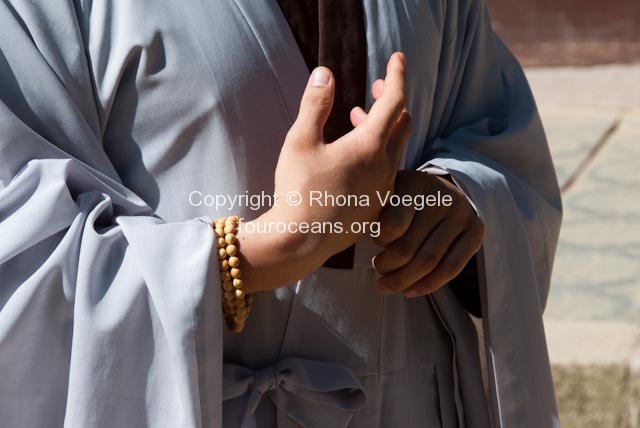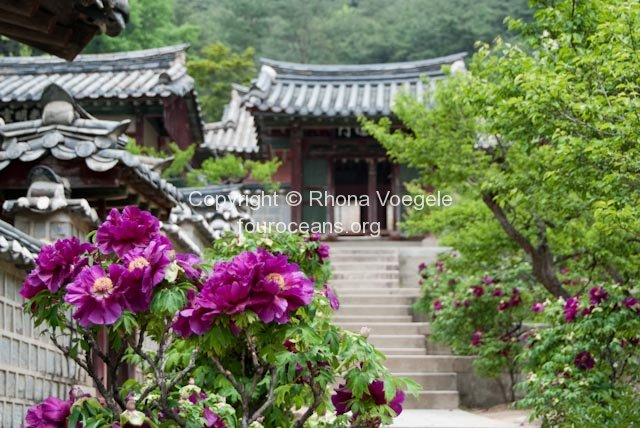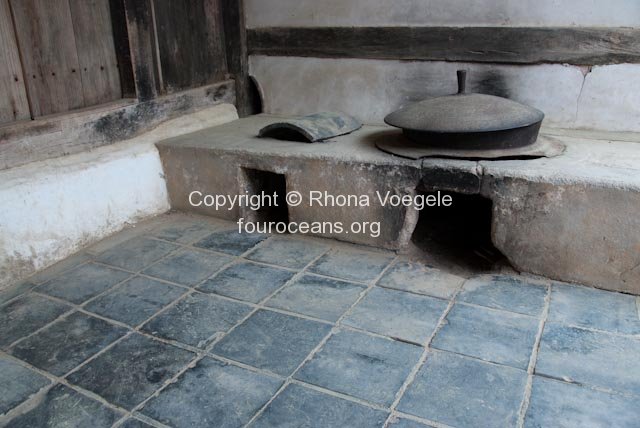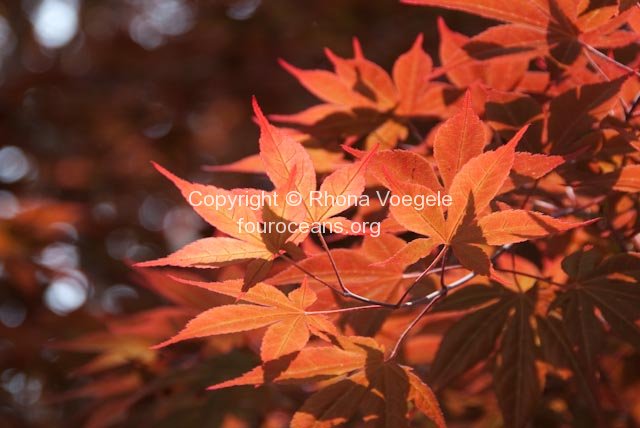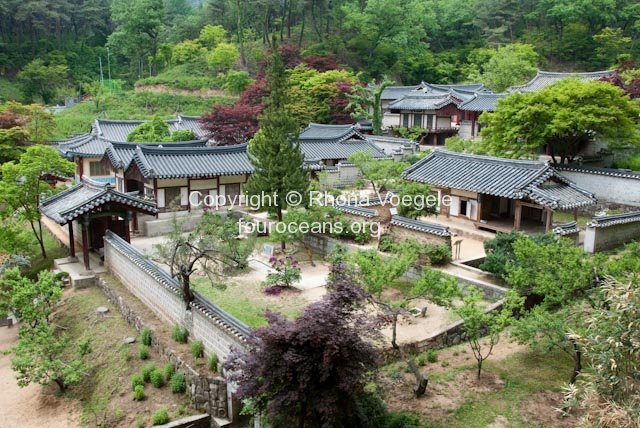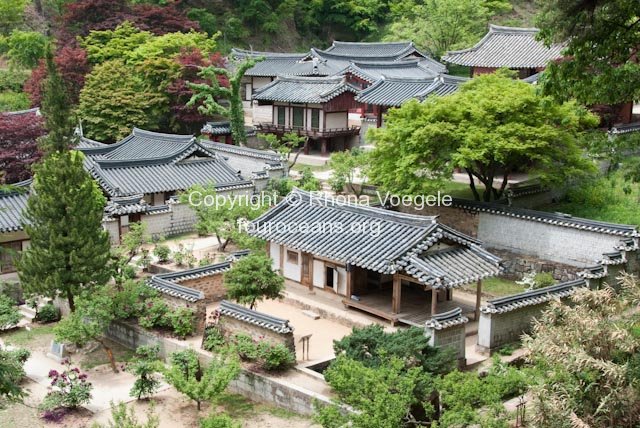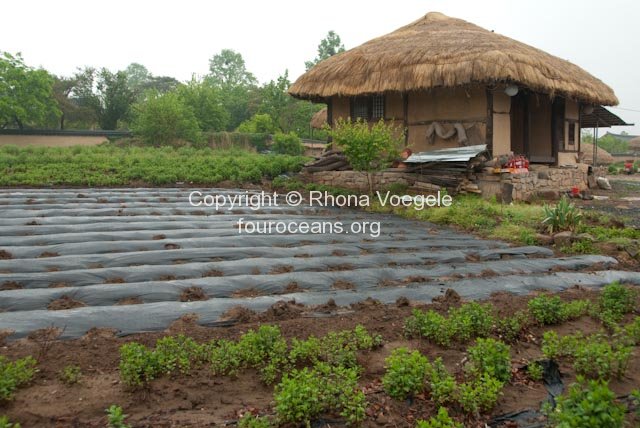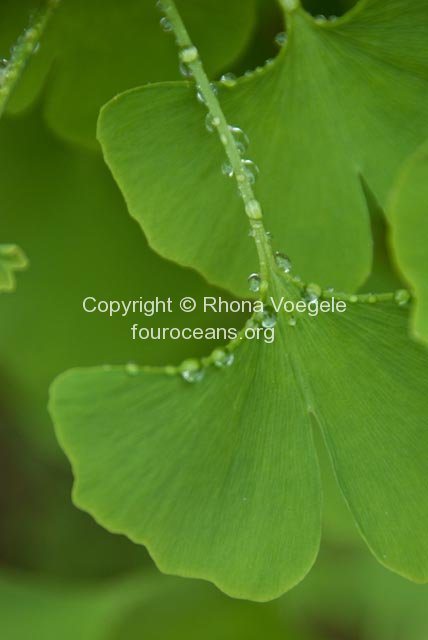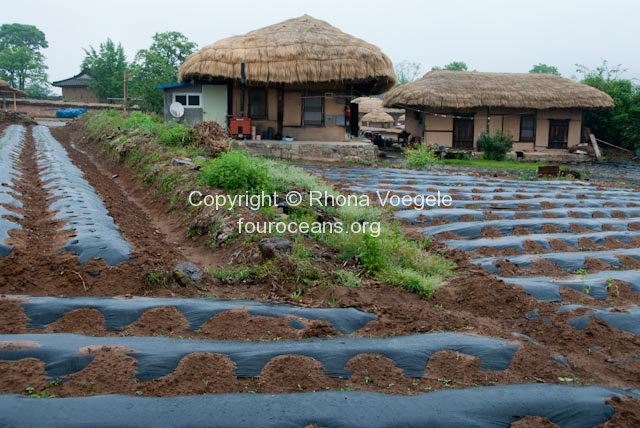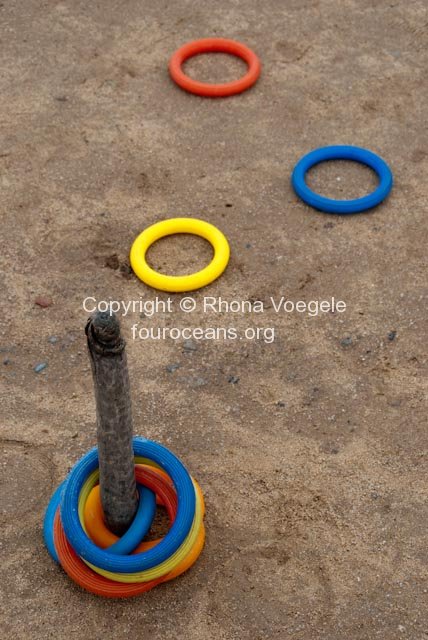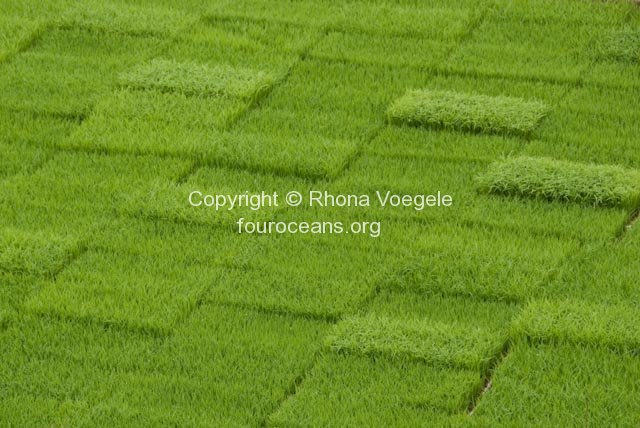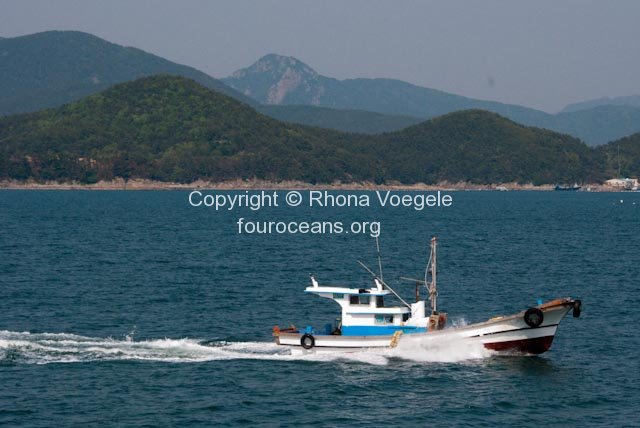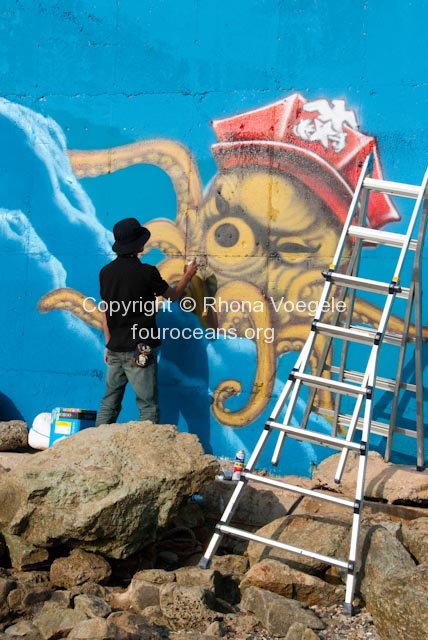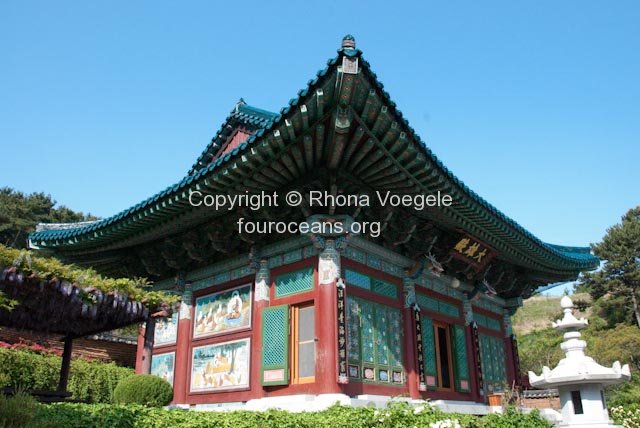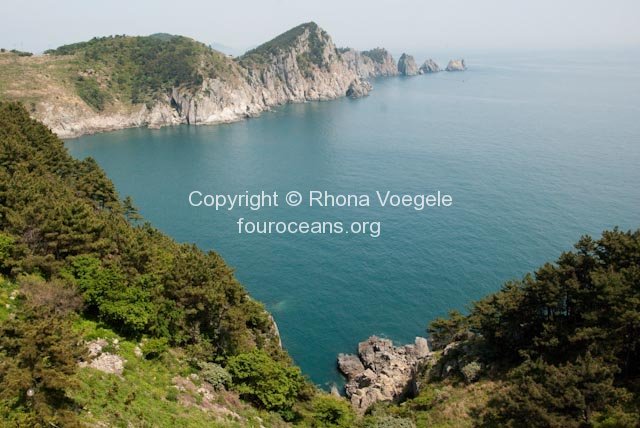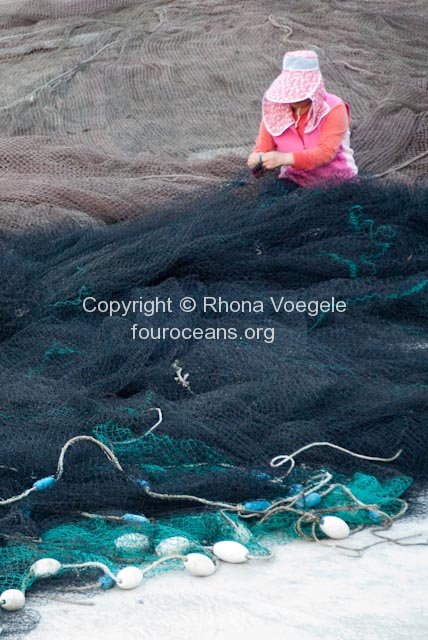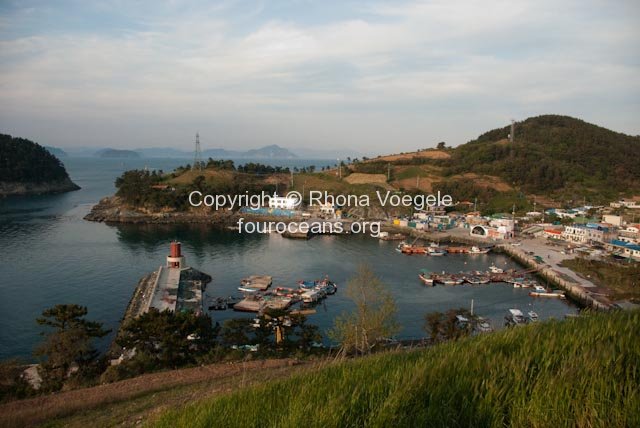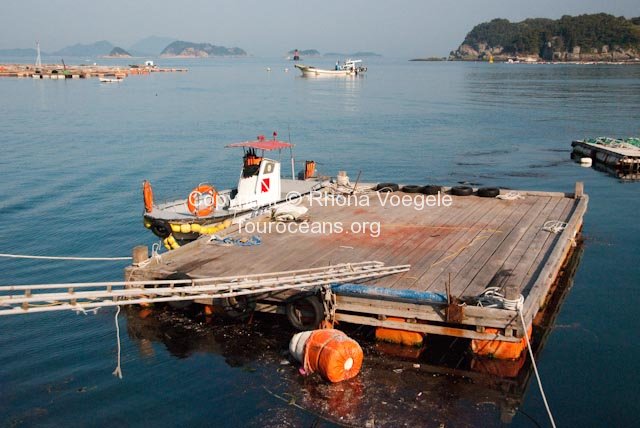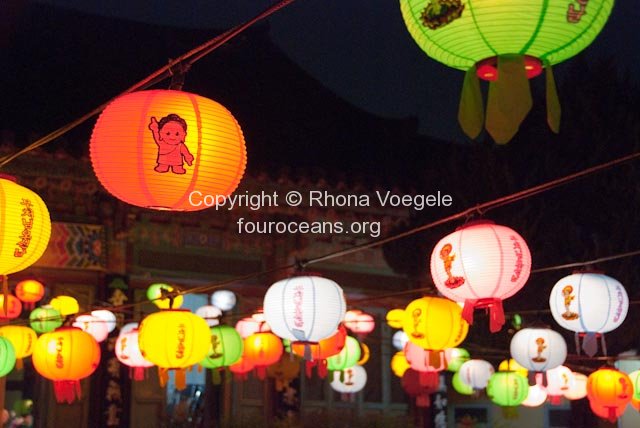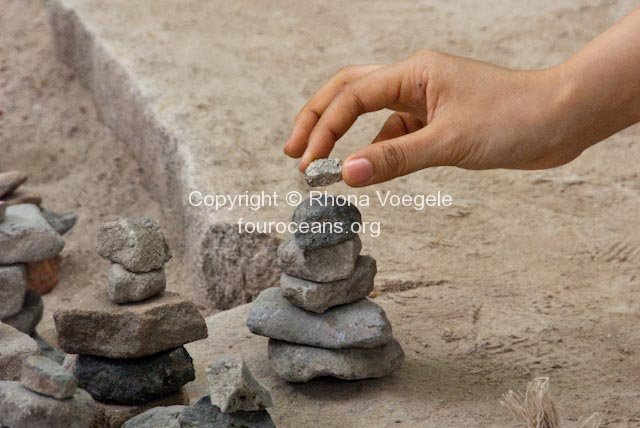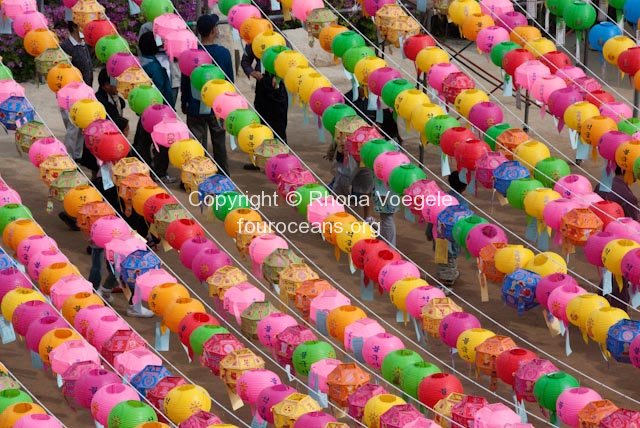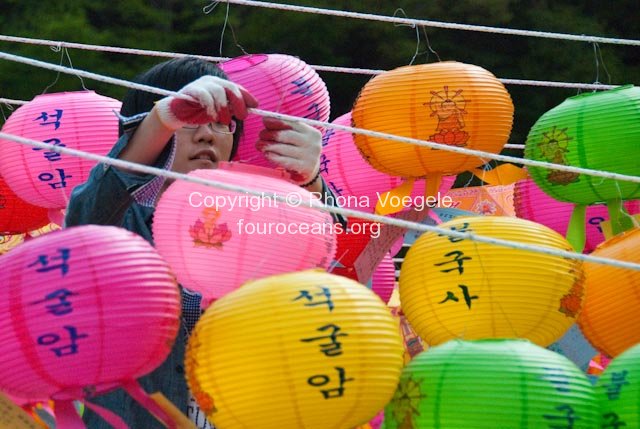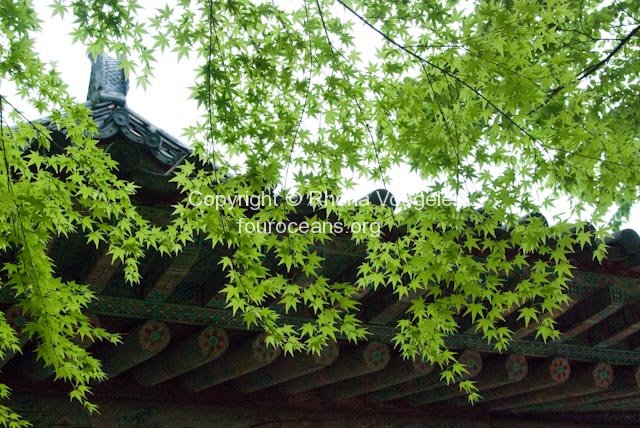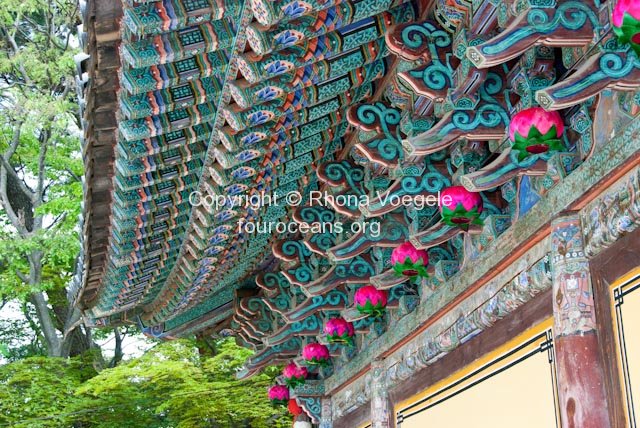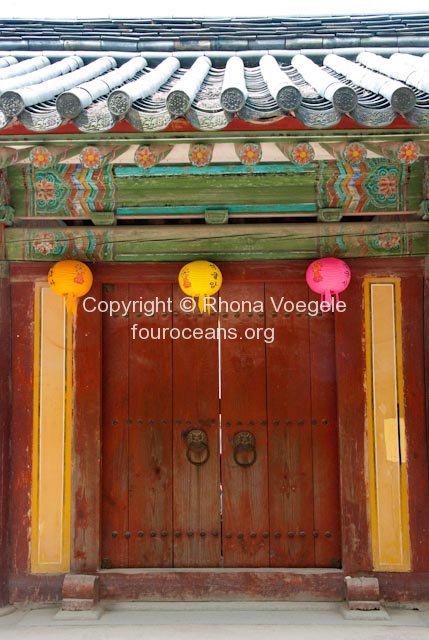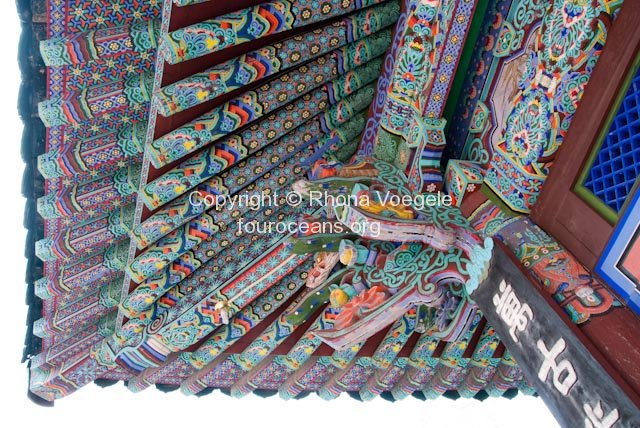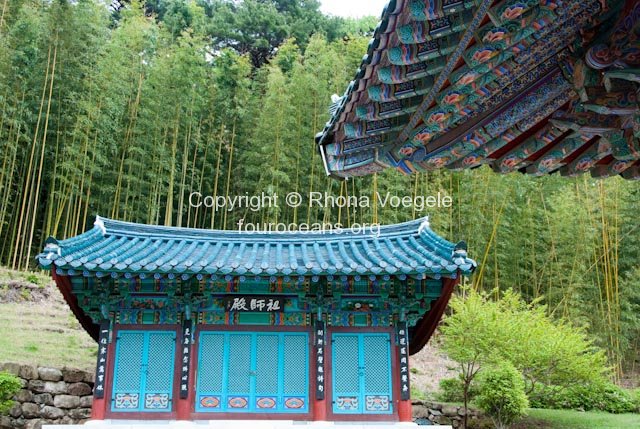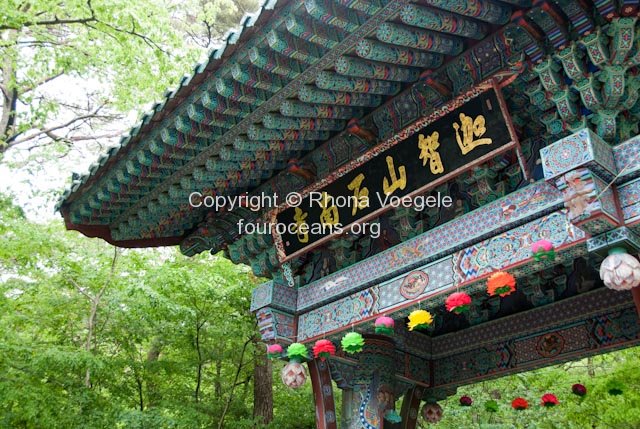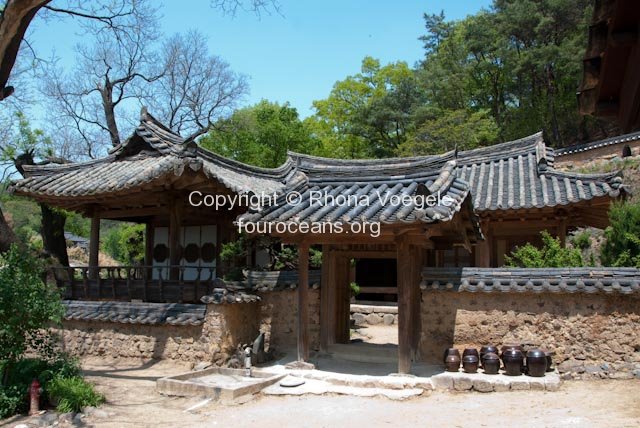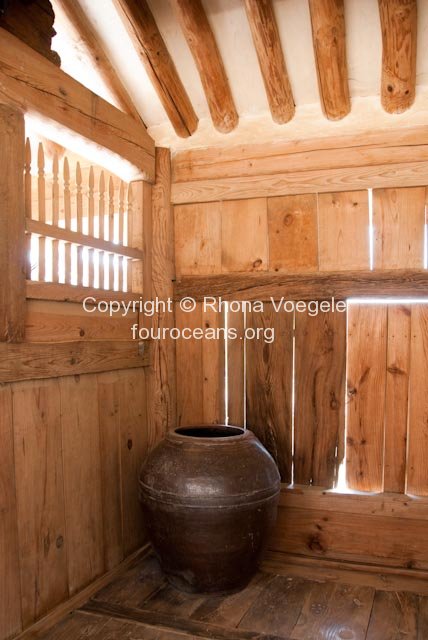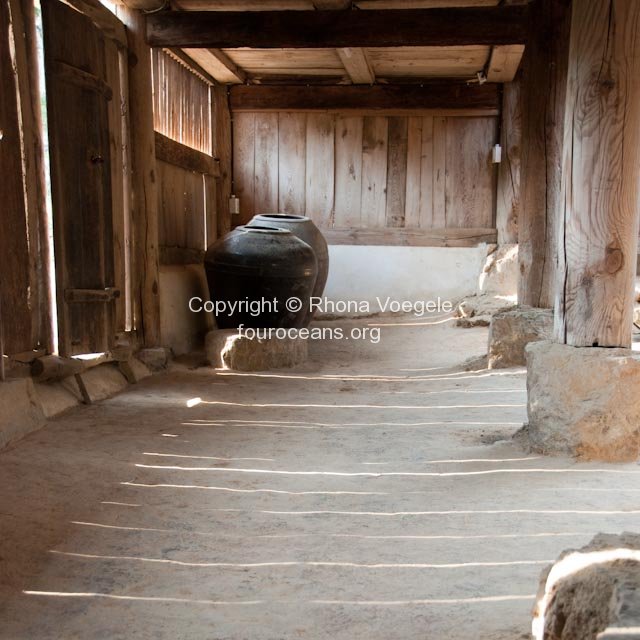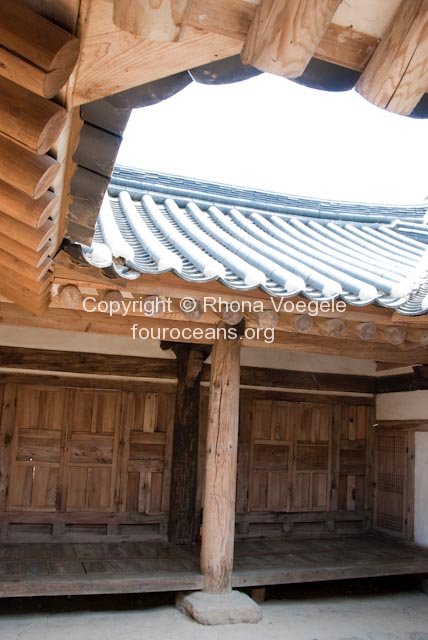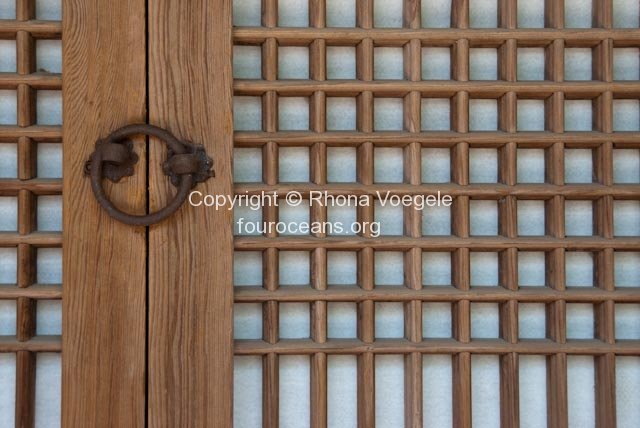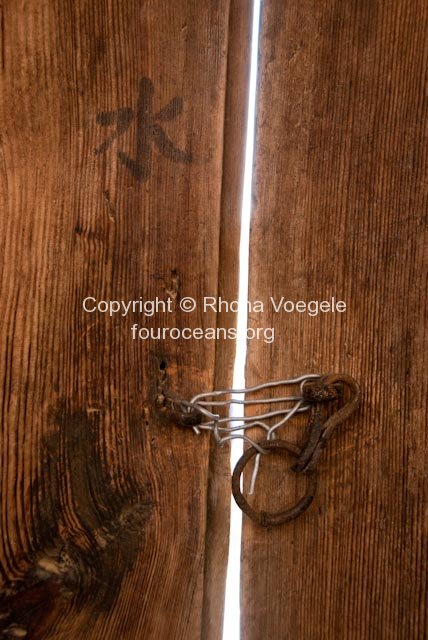Week 6: Gyeongju
–
–
After leaving the bustling city of Busan we headed to Yeonhwa Island, off Tong Yeong. It’s a small island of fishermen and people who made money off the crowd of day trippers who seemed to arrive while we were out walking the island end to end. In the evenings it was nice and quiet as we enjoyed our first ondol room, underfloor heating that keeps the Koreans warm during the cold winter. On the boat out to the island we were a little confused as we had 2 tickets for one price and 1 for a more expensive price. A man explained to Brett (age 43) that he and my mum (age 61) had got the pensioner price for over 65s while I was paying the normal fare. I guess they have as much trouble guessing a Westerner’s age as we have with telling how old that smooth faced Asian grandfather is. On the island we spent the day walking from our village to the other end of the island via fantastic views of Yongmeori, a rock formation jutting out into the sea that is said to look like a dragon’s head.
From Yeonhwa island we headed north to Gyeongju, jewel in South Korea’s historical crown. It was the capital of the Shilla dynasty (57BC – 935AD), which is regarded as the dynasty that founded a unified Korea for the first time. We arrived and my mum immediately got very excited about the many tumuli, tombs of ancient kings and royal family members that are scattered around the city. To me they look like grassy hills which may or may not have really cool treasures buried underneath but I guess I’m not a connoisseur of tumuli… We visited the park which encloses some of the more impressive ones and saw a cross section with copies of some of the more impressive treasures unearthed. That was cool but we’re hoping to see the real things at the Gyeongju National Museum before we leave. As for the tumuli they seem to pop up all over town, between buildings and next to petrol stations.
On our first full day in Gyeongju we headed to Bulguksa, a UNESCO world heritage site that was built in 751. Our visit coincided with Buddha’s birthday and we weren’t the only ones crowding our way into the temple that day. All along the path and in the open spaces around the ancient buildings coulourful lanterns were hung, paid for by worshipers who had donated money and whose prayers fluttered on pieces of paper hanging from the bottom of the lanterns. From there we walked to the Seokguram grotto, another UNESCO world heritage site constructed around the same time as Bulguksa temple. I could wax lyrical about the intricacey of the carving, the spiritual experience and the beam of light that shone from the Buddha’s head when I realised the meaning of life. It would all be a complete lie. We were hurried through the enclosed space and i was twice told off for being too slow. There were too many people waiting behind me to allow me to smell the lotus petals.
The next day we went to Seongnamsa, another temple. Compared to Buddha’s birthday crowds it was blissfully quiet and we enjoyed the forest setting, bamboo forest backdrop and the amazingly colourful and intricate painting that seems to adorn the roofs of Korean temples. In the brochure it mentions a three storied stupa that was
“built by Master Toui in order to defend the fatherland. It was destroyed during the Japanese invasion of Korea (1592)”
I guess maybe it didn’t work so well? Mind you the Japanese were eventually defeated so there could have been something to it?
Yesterday we headed outside town to a village called Yangdong. It was founded in the 15th century and has always been a village of scholars and landowners. There are over 160 thatched roof and traditional tile roof houses in the village and most are still lived in today. Traditionally the tiled roof houses were where the landlords lived while the thatch roof houses were for their servants. You can go inside the buildings that aren’t lived in and it was great to be able to explore the fantastic old wooden mansions. We spent almost all day exploring the various valleys the village is based around. There are 4 valleys forming the Chinese character for “not” and during the Japanese occupation the villagers managed to divert a nearby railway away from the base of the valleys. The addition of that railway would have made the character for “blood”.
Today we hiked in Namsan, a mountainous area to the south of Gyeongju. Which is why it’s called Namsan – “nam” is south and “san” is mountain. It was a full day’s hike with historical relics galore. The Shilla dynasty lasted almost 1,000 years and we saw more tumuli as well as many Buddhist carvings and stupas. Near the end of the walk at Chilbulam hermitage we spoke for quite a while to a nun about her life in the mountains and how Korean Buddhism differs from the Buddhism Brett and I have seen in other countries. Traditionally nuns and monks wake up at 3:30am but the 3 nuns there have agreed to rise later, at 4:45 every morning, as they need to be awake enough to serve tea and coffee to all the hikers passing through. They chant for an hour 3 times a day as well as several sessions of seated meditation. Then there’s practicalities like having to hike down to collect water and the fact that they can’t do laundry or wash properly up on the mountain. To do laundry or shower they walk to the closest town, 30 minutes down the hill. While we were talking there was a Hungarian nun chanting, she has apparently been a nun for 7 years and speaks fantastic Korean.
We plan on spending another few days in Gyeongju. It’s hard to believe some people only give it a couple of days if the 1 and 2 day suggested itineraries are to be believed. From here we hope to spend a night in Haeinsa temple (rising at 3:30am) and some time checking out Daegu’s traditional medicine market. Then some time in Andong, a new addition to our itinerary that looks like a very traditional and rural area.
Tags: Gyeongju, Namsan, Shilla, South Korea, tumuli, Yeonhwa Island
